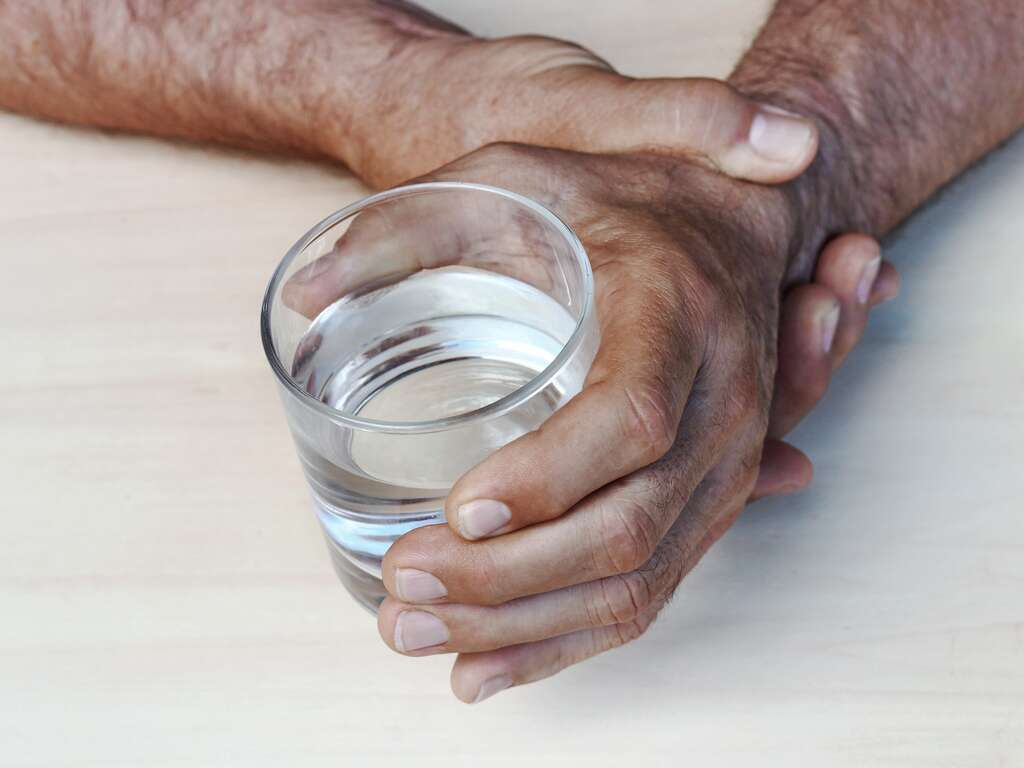Most people who drink to excess will experience mild symptoms of alcohol withdrawal the next morning; it’s called a hangover. Symptoms usually start to become uncomfortable when alcohol concentrations, or blood alcohol content (BAC) drops; alcohol withdrawal symptoms become increasingly uncomfortable as BAC goes to zero. Some common alcohol withdrawal symptoms you may experience after a bout of heavy drinking, (depending on what you drank and how much), can include: unusual fatigue and weakness, extreme thirst combined with a dry mouth, headache and muscle aches.
Unfortunately, the after effects of alcohol use disorder drive many people to choose “hair of the dog”, to ease the discomfort and unease that are part alcohol withdrawal. Although taking in more alcohol is an effective way of easing alcohol withdrawal symptoms, it causes more trouble in the long run for some individuals.
The purpose of this article is to educate and discuss the affects that even small amounts of alcohol have on the body, why we have hangovers and more severe symptoms, as well as methods to avoid alcohol becoming a problem in your life, and options for treatment at Turning Point of Tampa.
Alcohol Use Disorder
Recent discoveries in China have confirmed through chemical analyses that the earliest known alcoholic drink produced by humans was made from a mixture of fermented rice, honey, and hawthorn fruit or grapes. Residues of the alcoholic beverages were dated from between 7000 and 6600 BCE. They were retrieved from pottery shards that were discovered in a stone age village, located in the Yellow River Valley area of China. Humans have been trying to create ways to ease alcohol withdrawal ever since!
Alcohol use disorder (AUD) is currently one of this country’s most significant public health issues. The National Institute on Alcohol Abuse and Alcoholism (NIAAA) cites alcohol as the third most preventable cause of death in the United States. More than 95,000 people a year die from alcohol-related causes. According to WebMD, “alcohol plays a role in at least half of all serious trauma injuries and deaths…from traffic crashes, and suicides.”
Withdrawal Severity
The adverse physical and mental health impacts of abusing alcohol are significant. Severe symptoms and physical after effects of large quantities of alcohol, or of the long-term abuse of alcohol, contribute to life-threatening conditions like stroke, heart disease, liver disease, and diabetes.
And the news only gets worse. Recent research has also shown that consuming alcohol can actually shorten your life span by causing damage to DNA, which in turn accelerates aging. This occurs because drinking alcohol damages the protective mechanisms called telomeres located at the end of each strand of DNA. Additionally, The American Cancer Society states that alcohol USE is linked with several forms of cancer. These include, but are not limited to cancer of the mouth, throat, and of course liver cancer.
The National Institute of Health defines chronic alcoholism for men as consuming more than 4 drinks on any day, or more than 14 drinks per week. It is defined for women as consuming more than 3 drinks on any day or more than 7 drinks per week.
Prolonged Alcohol Use
Alcoholism has been considered to be a mental health disorder by The American Psychiatric Association since 1980. An AUD diagnosis (Alcohol Use Disorder) given to an individual indicates that they are unable to stop using alcohol, even in the face of grave and negative consequences. These usually include serious problems in relationships, at home, work or school, as well as serious legal and financial issues.
The person abusing alcohol often refuses to recognize there is a problem, or, if they do recognize the issue, they feel overwhelmed at the idea of losing a coping mechanism that has worked for so long, and therefore feel incapable of stopping the behavior.
More severe alcohol use disorders are commonly seen in hospital emergency rooms. Patients are admitted for a variety of things such as coma, withdrawal seizures, wet brain or dementia. Another reason alcoholics are admitted to the ER is that severe nerve damage has occurred. A condition known as polyneuropathy results when heavy prolonged alcohol use causes damage to nerves throughout the body. This condition often causes weakness, numbness and pain, usually in the hands and feet. It can also affect other processes such as digestion, urination and circulation, as well as cause difficulty in just walking.
Unfortunately, diagnosis and treatment of these conditions are frequently delayed until dramatic symptoms occur. One of the purposes of this review is to educate and increase awareness of the early clinical manifestations of alcohol withdrawal syndromes as well as aid in their appropriate identification and management. Individuals experiencing alcohol withdrawal should be aware of the importance of treating alcohol withdrawal symptoms immediately in order to avoid possible involuntary admission to a hospital.
Alcohol Withdrawal Syndrome
The term alcohol withdrawal syndrome refers to a set of withdrawal symptoms that occur after prolonged excessive alcohol use is discontinued. Alcohol withdrawal syndrome is frequently associated with a diagnosis of alcohol use disorder or AUD.
Physicians use the Diagnostic and Statistical Manual of Mental Disorders (DSM–5), issued by the American Psychiatric Association, to diagnose alcohol use disorder and its severity. Whereas the previous Diagnostic Manual (DSM-IV) looked at alcohol abuse and alcohol dependency separately, DSM-5 includes them both under the diagnosis of alcohol use disorder.
According to the 2015 National Survey on Drug Use and Health (NSDUH), 15.1 million American adults ages 18 and older had an alcohol use disorder, including 9.8 million men and 5.3 million women.
Alcohol Withdrawal Symptoms
Alcohol withdrawal symptoms can vary greatly from individual to individual. Some drinkers experience less severe symptoms and mild symptoms such as mild anxiety and depression. Of course, long term alcohol abuse can increase physical damage and cause more serious medical issues and medical complications such as stroke, cardiovascular disease and liver disease.
Of course, because the effects of alcohol withdrawal can vary for each individual, much depends on factors such as the length of time the individual has been abusing alcohol, as well as the amount of their alcohol intake.
In addition to the symptoms already mentioned, the after effects of alcohol withdrawal can also include a general feeling of malaise ( feeling illness or discomfort; an uneasiness whose exact cause is hard to pinpoint). Of course, more severe alcohol withdrawal symptoms can require inpatient treatment in a hospital setting or a qualified treatment facility by licensed behavioral health and licensed medical, professionals.
Mild Withdrawal Symptoms
The main affect that alcohol has on the body is that it depresses the central nervous system, which slows motor functions to the muscles, and comprehension, reasoning and speech centers in the brain. Alcohol also triggers the release of dopamine. The body naturally releases this chemical in reaction to a positive event, however, abusing alcohol triggers the body to release an abnormally high amount.
When alcohol intake stops, the brain remains in state of overstimulation because of the absence of higher than normal levels of dopamine. That’s when symptoms of alcohol withdrawal are experienced. For some, this abnormal release of dopamine reinforces a strong desire to repeat the experience, over and over again – which can eventually lead to:
More Severe Withdrawal Symptoms
Alcohol withdrawal syndrome or AWS is a set of physical and mental symptoms that set in after alcohol use is curtailed. These withdrawal symptoms can become quite severe and may include any combination of tremors, shakes, anxiety, agitation, irritability, insomnia, headache, sweating, feeling nauseous and difficulty concentrating.
Even more serious symptoms of alcohol withdrawal include vomiting, cramping and stomach pains. This, combined with an inability to get a sufficient amount of sleep, increases the physical and mental suffering. Because passing out and coming to is not the same as going to sleep and waking up refreshed. It is very important to our mental well being to get a normal amount REM sleep on a regular basis; alcohol withdrawal disrupts this natural pattern.
When alcohol withdrawal sets in, the heavy drinker may also experience a sensitivity to light and sounds. Symptom severity can also be compounded by a sense of dizziness. Physical shakiness is due to the heightened state of the body’s nervous system which is also due to alcohol withdrawal. Add to this a decreased ability to concentrate. Combined, all of these symptoms of alcohol withdrawal can seriously interfere with most activities of daily living. Additionally, mood disturbances such as depression, anxiety and irritability can cause a desire to seek relief with more alcohol, and the cycle begins again.
Alcohol Withdrawal Seizure
The most severe characteristic of alcohol withdrawal occurs when an individual experiences withdrawal seizures. There are several types of alcohol withdrawal seizures that can occur. When sudden discontinuance of heavy alcohol intake occurs, it can trigger a seizure in those individuals who are vulnerable. This is especially true for those individuals who have experienced a seizure previously.
The most typical and severe type of seizures are called generalized tonic-clonic seizures. Also known as convulsions, approximately 2 to 5 percent of alcoholics suffer this type of withdrawal seizure. This severe withdrawal symptom can have life threatening consequences. It is therefore extremely important to be aware that stopping drinking after prolonged use can trigger a seizure in some individuals. Alcohol detox in a professional setting, as well as additional treatment, is most likely required in these cases.
Delirium Tremens
Delirium tremens are yet another severe form of alcohol withdrawal. Also referred to as the DT’s, delirium tremens, can occur anywhere from two to five days after taking the last drink. Because DT’s can be fatal, this is a severe withdrawal symptom for which medical detox is most certainly recommended. The circulatory and respiratory systems can also be damaged during DT’s. Blood pressure and heart rate can undergo sudden dangerous changes, which can increase the risk of life-threatening consequences, such as fatal heart attack and stroke. Medical monitoring is necessary for anyone who may experience delirium tremens.
In cases where alcohol withdrawal calls for alcohol detox in a medical setting, admission to a hospital or treatment facility is required. In this setting, non addictive and non mood altering medications may be prescribed to treat the physical symptoms. Counseling and support groups assist with the emotional side, to help individuals cope with and overcome the desire to drink again.
The Last Drink
In addition to delirium tremens, yet another circumstance that can occur from long-term chronic alcohol use after taking the last drink includes an extremely serious condition known as wet brain. Individuals who are suffering from the initial stages of wet brain experience memory issues, confusion, and can have difficulty focusing, which contributes to problems in performing at work or school, and even in a conversation. Wet brain is a form of dementia, and as the condition worsens, individuals develop problems with muscle coordination, and eventually a slowing of mental activity – the most severe of which can result in a coma.
Heavy alcohol consumption causes wet brain because the body’s ability to produce the enzymes which are needed to convert thiamine or vitamin B1 into a compound which the body can use, is restricted. This situation is made worse because when heavy long term alcohol intake sometimes causes individuals to choose to consume alcohol over food.
Quitting Alcohol
Due to alcohol dependence and withdrawal severity, sleep problems can develop after quitting alcohol. Generally, long term serious sleep disorders seem to be more common among alcoholics, than among non-alcoholics. During both periods of drinking and withdrawal, alcoholics commonly experience problems falling asleep or staying asleep. They also experience a decreased time in healthy sleep.
Even recovering alcoholics who have been abstinent for some time may experience persistent sleep abnormalities. Additionally, alcoholics are more likely to suffer from other sleep disorders, such as insomnia or sleep apnea.
Clinical and Diagnostic Research
Clinical and diagnostic research has also shown a link between long-term alcohol abuse and chronic sleep problems. People can quickly develop a tolerance for alcohol, and this tolerance can in turn cause the need to drink more before bed, in order to fall asleep. Those who have been diagnosed with alcohol use disorders frequently report insomnia symptoms especially when they experience alcohol withdrawal.
Extensive clinical research studies have not been performed to specifically research this issue. and there is a need for more treatment studies for chronic insomnia in alcohol dependent patients.
Unpleasant Symptoms
The drug Antabuse (disulfiram) which is still used as a “treatment” for alcohol use disorder, was first prescribed in 1951. And, while it is definitely not a treatment for alcohol withdrawal symptoms, drinking while taking this drug will immediately induce several very severe and uncomfortable physical symptoms such as nausea, headache, sweating and chest pain. In other words, disulfiram combined with alcohol produces an immediate hangover. Additionally, any alcohol consumed will have absolutely no effect; and this reaction can occur up to two weeks after stopping the drug, if alcohol is consumed.
There is clinical evidence that this drug also can have the unfortunate side effect of inducing psychosis in those who are susceptible, if alcohol is consumed while using it. It is also important to note that Antabuse is not considered by anyone to be a replacement for counseling and treatment in a formal setting. Antabuse is only a stop-gap measure.
Alcohol withdrawal treatment options become somewhat limited with continued long-term alcohol addiction, however. If there is no intervention with an individual who has been drinking heavily for a while, the situation only gets worse. It has been demonstrated over and over again by countless individual experiences that alcoholism is a progressive illness. Continued alcohol abuse will only cause harm to the individual, if they are unwilling or unable to stop drinking.
Acute Alcohol Withdrawal
Obviously, severe alcohol withdrawal or acute alcohol withdrawal symptoms can be a complex health issue, involving both an individual’s physical, as well as emotional, well being. Of course, mild symptoms of alcohol withdrawal can be managed if an individual can stop drinking or moderate their intake, which may require some combination of education, as well as support from family and friends.
While others who have a more lengthy history of alcohol use would naturally have more severe symptoms from alcohol withdrawal, and would therefore require a more structured environment to stop drinking. Some length of time in an inpatient or residential treatment facility is recommended, in this case.
Of course, to detox safely, and comfortably, it would be wise to seek admission at a medical detox facility first, because of the need for close medical supervision for a short while.
Alcohol Scale
The book Alcoholics Anonymous uses the term real alcoholic to describe an individual who has lost the choice of whether to drink or not. However, there are several stages that a person who uses alcohol may go through prior to being diagnosed with AUD. This individual may start off as a social drinker, and is able choose whether to drink or not. This person will usually drink moderately at parties or other social gatherings.
Some individuals progress from there to the next level – the moderate drinker. This is a person who may still have a choice to drink or not and can stop drinking altogether if a good enough reason presents itself. For example, if alcohol use starts to interfere with their job performance, social standing or reputation.
Then there is the hard drinker. This person is beginning to experience negative consequences from drinking and is going through episodes of severe alcohol withdrawal. Problems resulting from heavy alcohol consumption can also include a dangerous and potentially fatal condition known as an alcohol induced blackout. This condition occurs when enough alcohol is consumed to block the transfer of memories from short to long-term storage. Alcohol induced blackouts affect area of the brain called the hippocampus, which is primarily responsible for learning and memory.
Negative health conditions may have also begun to surface at this stage. A physician may have told this person to stop or moderate. Some legal and financial consequences have may have begun to surface, also. These can include visits to the ER, or the court system and jails, as well as treatment centers or detox facilities. However, and although they may find it difficult, these drinkers may be able to stop drinking – one day at a time, of course. However, they will require professional medical advice to do so.
Alcohol Dependence
Then there is the real alcoholic. This is the person who has lost the choice of whether to drink or not. A person receives an AUD diagnosis (Alcohol Use Disorder) when they cannot stop using alcohol in spite of suffering serious health, financial and emotional consequences. Desperate to avoid dealing with reality, the person who is abusing alcohol at this stage will often even deny – to themselves – that there is a problem. Or, if they do recognize that they have an issue with alcohol, they may be unwilling to stop or feel overwhelmed by the idea, and therefore feel incapable of stopping.
Physicians use the Diagnostic and Statistical Manual of Mental Disorders (DSM–5), issued by the American Psychiatric Association, to diagnose alcohol use disorder and its severity. Previously the Diagnostic Manual (DSM-IV) looked at alcohol abuse and alcohol dependency separately, DSM-5 includes them both under the term of Alcohol Use Disorder.
Symptom Triggered Therapy
The 20 questions pamphlet published by Alcoholics Anonymous lists 20 serious symptoms, including withdrawal symptoms that, when taken together, can indicate if an individual is developing dependence on alcohol. It is an informal tool which can be used to diagnose whether potential problem drinkers may be progressing toward alcoholism. Answering three or more questions in the affirmative could indicate the person may be developing a drinking problem.
To determine if an individual has experienced severe alcohol withdrawal, the pamphlet poses such questions as, “Do you drink alone?” or “Do you feel remorse after drinking?” or “Do people tell you you drink too much?” The problem being that any real alcoholic who is in denial about their problem would be sure to only answer two questions with a YES, thereby confirming to themselves they are not alcoholic!
Addiction Treatment
DSM-5 lists 11 symptoms that describe alcohol use behavior, each of which can help physicians determine if a person suffers from alcohol use disorder. The symptoms match up pretty well with A.A.’s 20 questions pamphlet, mentioned previously. The hope here is that the problem drinker is more likely to reveal the truth when confronted in confidence, to a medical professional.
Here, the presence of at least 2 symptoms indicates an AUD, while the number of symptoms present indicates the severity of the disorder. A mild AUD displays 2-3 symptoms; a moderate AUD 4-5 symptoms; and a severe AUD displays 6 or more symptoms. According to the 2015 National Survey on Drug Use and Health (NSDUH), 15.1 million American adults ages 18 and older had an alcohol use disorder, including 9.8 million men and 5.3 million women.
Treating Alcohol Withdrawal
Treating alcohol withdrawal and delirium tremens as well as treatments for alcoholism have both come a long way from their origins in the 1800’s. In the mid-nineteenth century, public drunkenness had begun to be a public nuisance, as well as a major health issue. During this time, individuals who were unable to moderate their alcohol consumption after a few scraps with the law and the courts, or were causing disruptions to businesses and were making it dangerous to walk the streets, might have found themselves housed voluntarily in what were known at the time as inebriate homes or asylums, instead of jail.
The National Library of Medicine has this to say about treatment options for alcohol withdrawal if you were unlucky enough to be alcoholic in mid nineteenth century America:
Contemporaneous types of 19th-century North American inebriate institutions and attempts by their promoters to develop a public treatment system.
Inebriate ‘homes’ or ‘retreats’ descended from a tradition of therapeutic temperance that originated in the Washingtonian Movement of the 1840s. They were small, urban, private and charitable, dedicated to voluntaristic and Christian principles, and were intimately connected with local temperance groups that provided support after residential treatment. Inebriate asylums took inspiration from insane asylums and were large, public, coercive and isolated in rural areas. Their promoters were steeped in …Victorian psychiatry. Asylum enthusiasts dominated the public treatment movement, but developed a largely disciplinary and custodial vision that undermined their political appeal. As inebriate asylums could not easily be distinguished from insane asylums, almshouses or jails, legislators regarded them as superfluous and very few were established. Prohibition in the 1920’s destroyed what public inebriate institutions existed. Inebriate colonies, usually connected with county jails, were the only survivors of the 19th-century treatment movement apart from private sanitaria and a few inebriate wards in city or county hospitals.
Treatments for Alcoholism
Alcoholism was first considered to be a disease as early as 1780 by Dr. Benjamin Rush. Born in January 1746, in Pennsylvania, Rush was one of the Founding Fathers of The United States, as well as a prominent and progressive thinking physician. His signature can be found on the Declaration of Independence. He was not only a physician, but was also a politician, social reformer, humanitarian, and educator.
Behavioral Health Conditions
Dr. Rush was especially engaged in the areas of behavioral health education and medicine. He not only advocated for the idea of free public education but also a more enlightened penal system. Additionally Rush also argued that illness was the result of imbalances in the body’s physical systems as well as disfunction in the brain. How true that is for alcoholics!
He promoted public health, and stressed the importance of personal hygiene. Because of his studies of mental and emotional disorders he is considered to be one of the founders of American psychiatry, as well. In 1965, Rush was recognized by the American Psychiatric Association for his contributions. The man was definitely ahead of his time, and although the ideas he put forward met resistance, he persisted. His ideas prepared the way for later medical research, and contributed to developments in the area of todays addiction treatment options.
Alcohol Withdrawal Learning
The education of the public with regard to the ideas originally put forth by Dr Rush did not begin in earnest until the mid 1930’s. It was at this time that the concept of alcoholism and addiction itself as a disease of the mind and body began to gain public acceptance. The two contributing factors here were the founding of Alcoholics Anonymous in 1935, and the publication of the AA Big Book of Alcoholics Anonymous.
Additionally The Saturday Evening Post, which was a very popular weekly magazine at the time, published an article about Alcoholics Anonymous. Written in 1941 by Jack Alexander. the article caused Alcoholics Anonymous to literally came into public awareness overnight. Inquiries began to pour in to Alcoholics Anonymous World Services office in New York, from alcoholics and their families everywhere.
Why Stop Drinking?
Besides the reasons previously outlined, it is important to recognize that Alcohol Use Disorder is a progressive illness. This means essentially that the physical, mental and emotional consequences to the individual will only get worse over time. Many people realize they might have a problem with alcohol but are unable or unwilling to stop drinking. However, someone who receives a diagnoses of AUD will one day reach a point where they won’t be able to image life with alcohol or without it.
According to the NIAAA, “the symptoms of alcohol withdrawal typically appear between 6 and 48 hours after heavy alcohol consumption decreases…initial symptoms of alcohol withdrawal intensify and then diminish over 24 to 48 hours.”
Of course, there are ways to ease the discomfort of alcohol withdrawal. If you have decided you may have a problem with alcohol, it would be wise to consult with a physician or addiction specialist. They are able to offer valuable guidance, non addictive medications and resources to ease the discomfort of withdrawal, from both a physical and emotional standpoint. This is especially important if you have used alcohol for a long period of time, drink large amounts of alcohol, or use legal or illegal drugs in combination with alcohol.
Alcohol Withdrawal Treatment Options
For many, the road to sobriety begins with detoxification. Clearing the alcohol from your system is the first step in attaining freedom from alcohol addiction. This may require admission to a hospital or treatment facility. There professionals can monitor vital signs like BP, body temperature and heart rate make sure they stay within safe levels. They may also give fluids and initial doses of non addictive medications to ease withdrawal symptoms. Also, they will be alert for more severe symptoms, such as hallucinations or seizures.
Remember, the experience of literally millions of alcoholics worldwide has shown that the only “cure” for chronic alcohol abuse is continued abstinence. The first step in the road to long-term sobriety begins with the admission that there is a problem; the next step is acceptance.
Some Suggestions For the Person Considering Detox
For the safest and most comfortable recovery from alcohol withdrawal, individuals suffering from moderate to severe withdrawal symptoms, Turning Point of Tampa now offers inpatient medical detox in a non hospital setting for alcohol and drugs.
If you have been considering taking your last drink, here is one suggestion to help you solidify your reasons for doing so – write down a detailed account of why you’re giving up alcohol, and include the negative consequences you have had in the past, and which you are no longer willing to endure in the future.
Remember, at first, it is important to try and avoid people, places, and events which may trigger a desire to drink. Try re-engaging in a hobby that was abandoned. There are also many other activities such as exercising, meditating that can refocus attention away from risk factors, and thoughts of drinking again. Attendance at AA or other support groups is highly recommended. Additionally, many people feel the need to seek professional counseling with a licensed therapist.
Substance Use Disorders
Living life without abusing alcohol or other addictive substances can give you back so much. Avoiding serious legal and health issues, for example. Or how about healing the many broken relationships in your life and getting some relief from financial insecurity?
Don’t forget regaining your lost self-esteem. Realizing that it is possible to live without alcohol through attendance at AA meetings and building a framework for sobriety through working the steps can be a great support. Yes, alcohol withdrawal symptoms are uncomfortable for a short period of time, but the long term pay-off is most assuredly worth it!
Family Members – Supporting Your Loved One
Addiction is a family disease, and recovery from addiction of any kind is a lifelong process. If you intend to assist a loved one in the process of recovery from addiction, it is important for you to also have a strong support system to rely on. Support from family, friends and Al-Anon meetings can make all the difference for you when the going gets tough, which it will. Here are some steps you can take that will can assist you in your recovery process.
First, remove any temptations, such as alcohol, from the house; hide the car keys, or keep them with you, if you feel the need. Also, try to keep a calm, and supportive manner, if possible. Most importantly – attend Al-Anon or another support group. Also, encourage your loved one to attend AA or other support group meetings.
Turning Point of Tampa also offers an ongoing weekly family support group free of charge for any family member that has a significant other or loved one in any level of treatment at Turning Point of Tampa.
Alcohol Withdrawal Help at Turning Point of Tampa
Turning Point of Tampa offers a full continuum of care. Beginning with detoxification, our medical and clinical staff will take care of you during alcohol withdrawal. After detox comes Residential Treatment, Day Treatment, and Intensive Outpatient Treatment. Additionally, TPOT also offers treatment for eating disorders and dual diagnosis.
The medical team at Turning Point of Tampa consists of:
Hardeep Singh, MD, FASAM, Medical Director – Dr. Hardeep Singh received his medical degree from King George’s Medical College and has been in practice for more than 20 years. Dr. Singh was named Doctor of the Year by Tampa Magazine in 2020, which was the third time he received that honor.
Ryan Estevez, MD, PHD, MPH, FASAM, Director of Psychiatric Services – Dr Estevez has earned several advanced degrees in health and behavioral sciences. They include a bachelor’s degree in psychology, and master’s degrees in both social psychology & public health.
Both Dr Singh and Dr Estevez are members of The American Society of Addiction Medicine. Founded in 1954, ASAM is a professional medical society offering continued education in the field of addiction medicine.
Allison Tiisler, BSN, RN Clinical Nurse Manager – Allison received her degree in nursing from University of South Florida and is a former client of Turning Point of Tampa. She has been in her current position at TPOT since 2020.
Donna McWilliams, LPN, Nursing Team Lead – Donna has worked in the field of addiction treatment since 2016 and has been at TPOT since 2020. Most of her daily tasks consist of direct patient care. Donna is the liaison between therapists, clients, and the doctors. This includes supervision all medication orders from doctor, to pharmacy, to distribution to our clients.
Every admission at Turning Point of Tampa goes through a nursing assessment which is reviewed by the medical director to learn about the clients’ substance abuse history as well as any medical needs in order to establish appropriate level of treatment services for the clients success in recovery.
Turning Point of Tampa’s goal is to always provide a safe environment and a solid foundation in 12-Step recovery, in tandem with quality individual therapy and group therapy. We have been offering Licensed Residential Treatment for Substance Abuse, Eating Disorders and Dual Diagnosis in Tampa since 1987.











